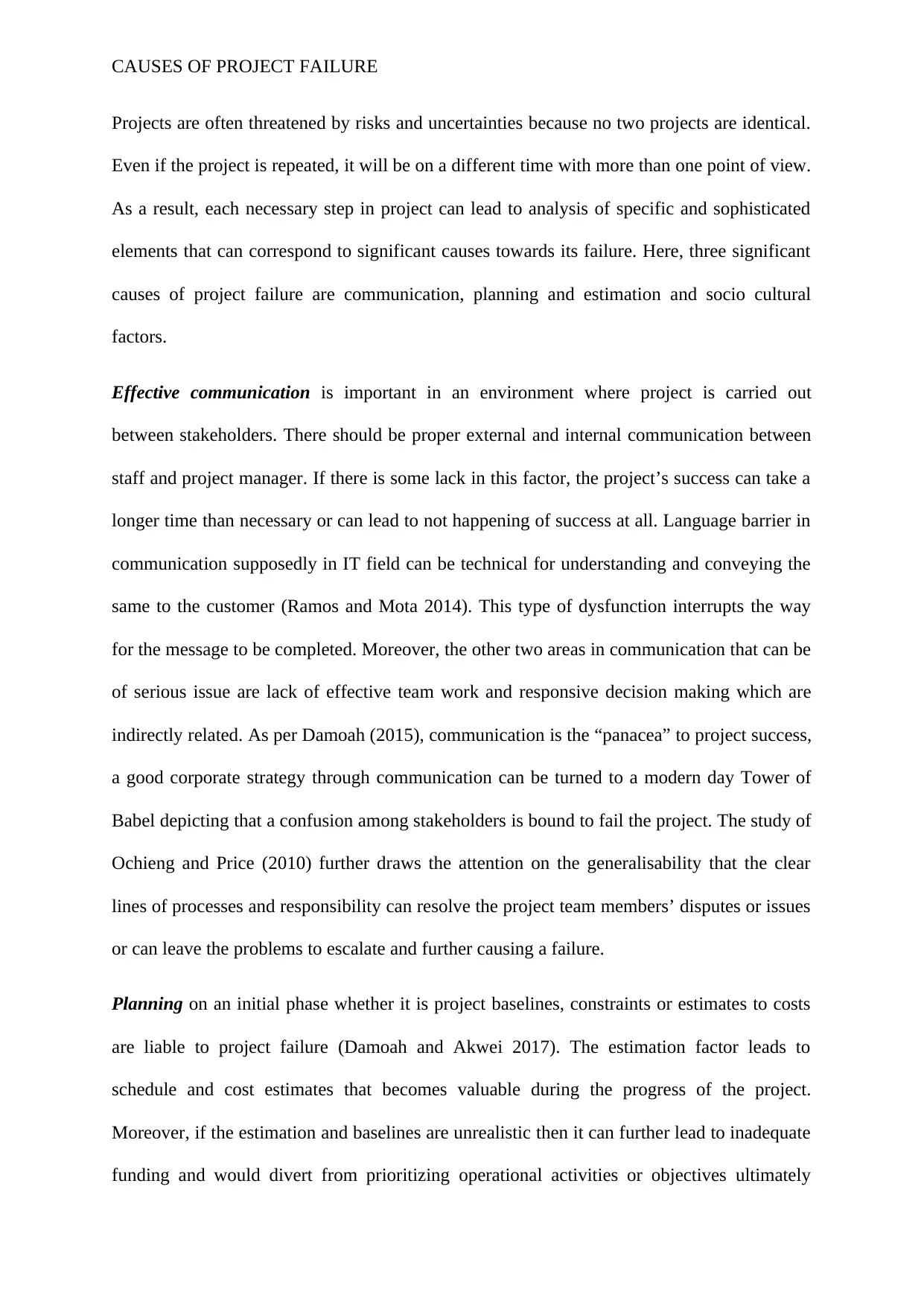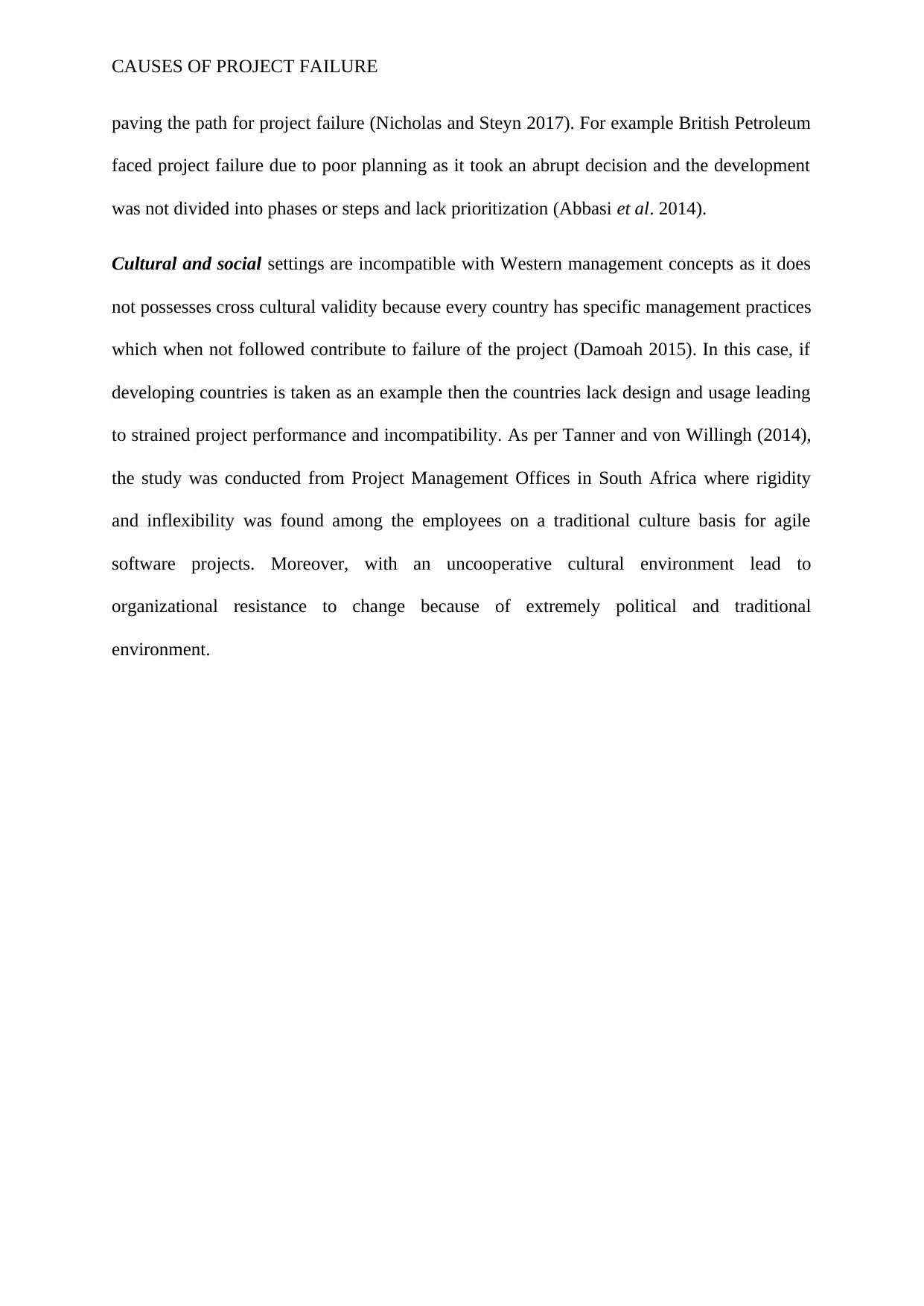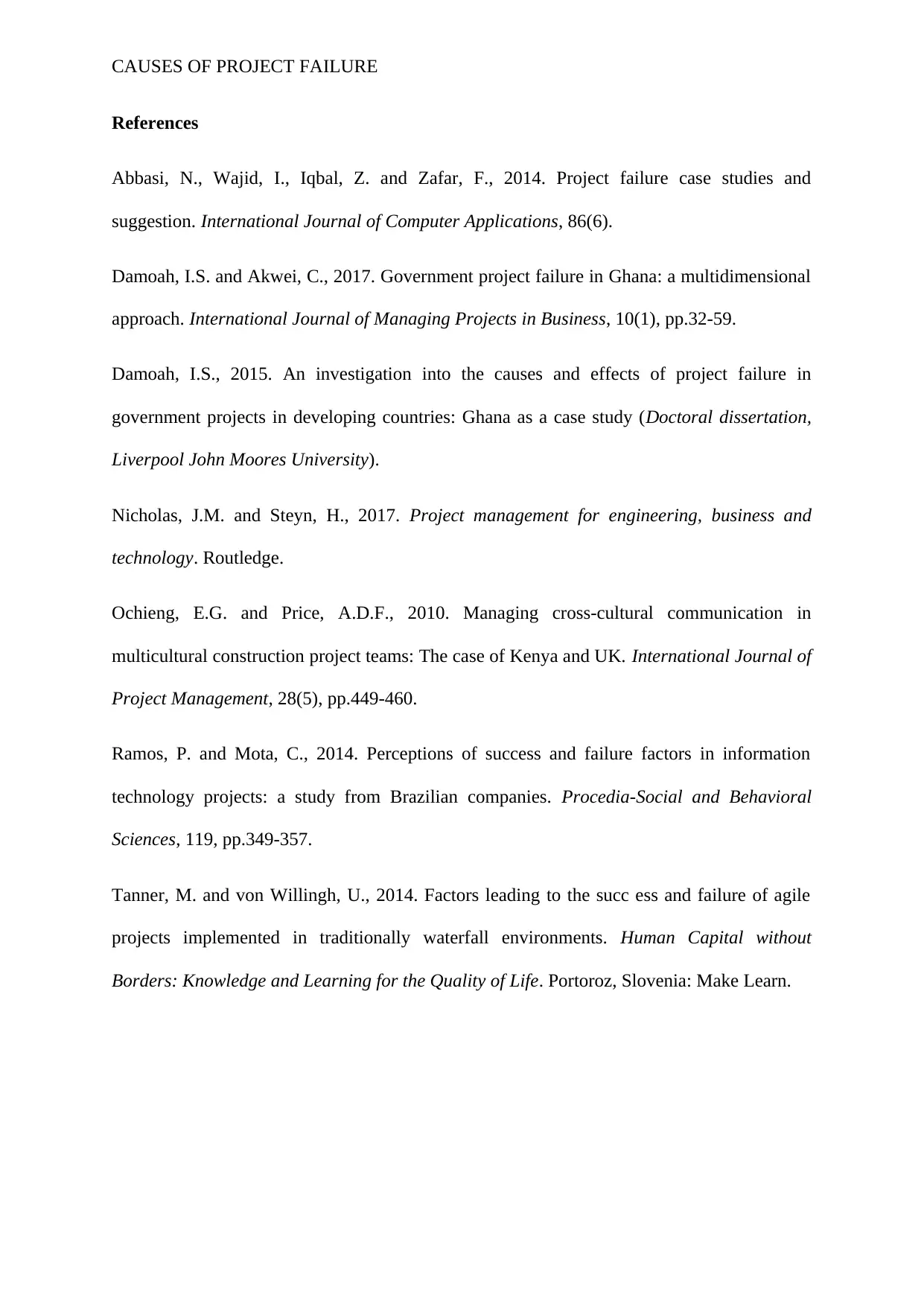Analysis of Significant Causes of Project Failure in Projects
VerifiedAdded on 2023/06/03
|4
|856
|344
Report
AI Summary
This report delves into the significant causes of project failure, identifying communication, planning and estimation, and socio-cultural factors as key contributors. It emphasizes the importance of effective communication among stakeholders, highlighting the impact of language barriers, teamwork issues, and responsive decision-making. The report also examines the role of planning and estimation, stressing the need for realistic baselines and accurate cost assessments. Furthermore, it explores how cultural and social settings can lead to project failures, particularly when Western management concepts are not compatible with local practices. The report provides examples and references to support its findings, offering valuable insights for project managers and leaders aiming to improve project success rates. The analysis includes references to academic research, case studies, and industry examples to illustrate the complexities of project management and the multifaceted nature of project failures.
1 out of 4











![[object Object]](/_next/static/media/star-bottom.7253800d.svg)